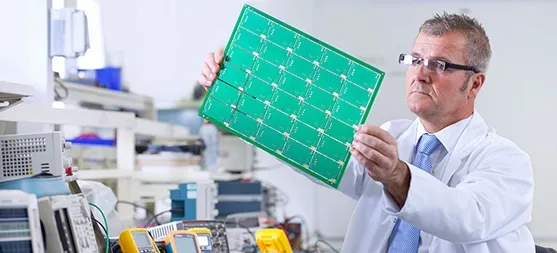
IEC 62368-1 introduction
IEC 62368-1 is a safety standard relating to electrical and electronic equipment.
in the field of audio, video, information technology and communication.
The standard classifies energy sources, establishes protections against them, provides guidelines regarding their application and requirements.
This is intended to reduce the likelihood of injury, pain and damage to property due to fire.
In Europe, the standard reference is EN IEC 62368-1:2020 and supersedes EN 62368-1:2014.
IEC 62368-1 technical updates that will impact manufacturers
The third edition of IEC 62368-1 replaces and cancels the previous one (2014) constitutes a technical revision.
The notable technical differences compared to the previous edition include:
Scope
The scope remains largely the same.
Large equipment installed in restricted access areas is now also covered.
Although additional requirements may apply to equipment with large mechanical aspects.
However, the scope does not apply to equipment with dangerous moving parts that are not self-contained.
Such as, robotic equipment, robots for personal care, etc.
In addition, the scope states that the application of IEC 62368-1
(In terms of safety aspects for transferring DC power through communication cables and ports)
It is now required for equipment capable of supplying DC power over common communication cables, such as USB or PoE.
It should be noted that CSA C22.2 No. 62368-1:19 & UL 62368-1, Ed. No. 3, include a national difference (1DV.2.3) which modifies this requirement.
For outdoor equipment- additional requirements (Annex Y)
Which are specifically relating to construction requirements for outdoor enclosures, have been outlined in annex Y.
Overall, this is the same as IEC 60950-22 Outdoor ITE and Reflects the current conduct.
But the requirements were made based on risk.
These include general requirements; requirements for resistance to UV radiation; UV light conditioning test.
resistance to corrosion; gaskets.
protection of equipment within an outdoor enclosure, including protection from moisture, dust and mechanical strength of enclosures.
Optical radiation – new requirements (section 10.4)
The requirements relate to protection against optical radiation.
which is projected from lamps and lamp systems.
The requirements have been significantly rewritten to clarify the requirements and explain how to handle each type of optical radiation.
Many of the requirements were derived from the horizontal standards.
Therefore they are not expected to significantly affect the manufacturers.
Isolated liquids – additional requirements (4.4.4, 5.4.12, 6.4.9)
Whilst the standard continues not to address the use of insulating liquids as a replacement for basic, supplementary or reinforced insulation, it does now contain requirements where an insulating liquid displaces air comprising a safeguard.
Clause 4.4.4 ties together the requirements for insulating liquids and points to the other relevant clauses in the standard.
Clause 5.4.12 addresses the use of liquids as an insulator to protect against electrically caused injury. The clause requires the liquid to not break down due to overvoltages, including transients, that enter the equipment, and peak voltages that may be generated within the equipment.
The requirements around pressure relief and containment of hazardous substances, and for the container of the liquid, are also addressed in clause 5.4.1.12.4.
It should be noted that creepage and clearance distance requirements apply to the equipment both with and without the insulating liquid present, and the loss of the insulating liquid needs to be considered as an abnormal operating condition.
Requirements relating the potential flammability of insulating liquids have been introduced in clause 6.4.9.
Work cells – additional requirements (8.5.4.2)
Work Cells are defined as a ‘space within the equipment of such size that a person can enter completely or partially (for example, entire limb or head) for servicing or operating the equipment and where mechanical hazards may be present’. Requirements for work cells have been introduced in clause 8.5.4.2, however these are consistent with those in IEC 60950-23 covering Large Data Storage Equipment, so should not take manufacturers by surprise.
Measures to protect persons in the work cell are achieved through the prevention of access to dangerous (class 3) moving or other parts through the use of safeguards such as interlocks, barriers, signals, procedures and training.
Protective mechanisms may be overridden by skilled persons, where appropriate interlocks and emergency stop systems and visual indicators are provided in accordance with 8.5.4.2.2.
Wireless power transmitters – additional requirements (9.6)
Clause 9.6 has been introduced to address the thermal hazards associated with wireless power transmitters (e.g. near field wireless chargers), resulting from the heating of foreign metallic objects placed near the transmitter. The test requires that a foreign metallic object in contact with the transmitter during charging does not exceed 70°C.
Addition of requirements for fully insulated winding wire (FIW) (G.5.3.4)
The introduction of clause G.5.3.4, allows transformers with FIW to be used in equipment within the scope of this standard. The requirements are similar to those introduced by AMD1:2013 of IEC 61558-2-16:2009, which allows the use of FIW wires in switch mode power supplies (SMPS).
Alternative method for determination of top, bottom and side openings for fire enclosures (6.4.8.3)
Requirements for top, bottom and side openings for fire enclosures have been revised so that they more closely match the previous requirements in 60950-1, including the reintroduction of the side openings requirements. The requirements in the previous version of 62368 (2014) caused issues for some products which were previously compliant to 60950-1. A number of clarifications have also been made to allow for a more consistent application of the standard, including to what constitutes top, bottom and side openings, and to help identify the applicable requirements and testing. The requirements addressing the integrity of the fire enclosure and the compliance criteria remain the same.
Sound pressure – alternative requirements (10.6)
Safeguard requirements for protection against long-term exposure to excessive sound pressure levels from personal music players, earphones and headphones are specified in clause 10.6.
The dose based system to reduce the level of sound energy that an individual receives without putting their hearing at risk has been introduced in clause 10.6.3. This system aims to limit the Calculated Sound Dose (CSD) to below 80 dB for a maximum of 40 hours duration, through guidance and warnings to the user. Requirements to limit the momentary exposure level (MEL) are also provided in clause 10.6.3.3.
Compliance can be achieved using either 10.6.2 or the newly introduced method in 10.6.3. However, the standard encourages manufacturers to implement 10.6.3, as it is expected that this will be the only method of compliance available in the future.
Additional changes
Whilst the above represents the most notable changes to the standard, it is not an exhaustive list. Other clauses have also been amended to a greater or lesser extent, and products will require re-testing to ensure they meet the requirements of the latest version of IEC 62368. These include:
- 4.1.6 Orientation during transport and use
- 5.5.6 Resistors
- 5.8 Backfeed safeguard in battery backed up supplies
- 6.4.5 Control of fire spread in PS2 circuits
- 6.4.6 Control of fire spread in a PS3 circuit
- 6.4.7.2 Separation by distance
- 6.5.1 Internal and external wiring
- 6.5.3 Internal wiring for socket-outlets
- 8.6.1 Stability of equipment
- 9.3 Touch Temperature Limits
- 9.4 Safeguards against thermal energy sources
- Annex S.2 Flammability test for fire enclosure and fire barrier integrity
- Annex X Alternative method for determining clearances for insulation in circuits connected to an a.c. mains not exceeding 420 V peak (300 V RMS)
IEC 62368-1:2018 – What do manufacturers need to do?
Manufacturers need to review their documentation to ensure their product is tested to the latest version of the IEC 62368-1:2018 and perform additional testing where relevant to bring them up to the current standard and ensure compliance. It may also be necessary to update technical documentation, test results and declarations to reflect the new standard and demonstrate conformity to legislation.
How can we help?
360 Compliance can assist manufacturers in identifying if they need to carry out any additional testing and ensure they have all the regulatory compliance evidence, including technical documents, in place to ensure continued compliance.
For more information on IEC 62368-1:2018 and support in checking if your product is compliant, please contact our experts.
You may also be interested






